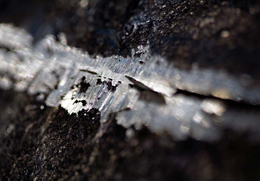 As prices of precious metals continue to increase mineral prospectors are pressed to consider remarkable places for the future of mining. While mining is already dangerous, with miners handling unpleasant material in risky situations, consider just how much more extreme the profession might become if the mining ranged out to asteroids out in space or the floor of the ocean. Though the idea of space or ocean seems farfetched when it comes to mining, a few pioneering companies are making plans to mine these places.
As prices of precious metals continue to increase mineral prospectors are pressed to consider remarkable places for the future of mining. While mining is already dangerous, with miners handling unpleasant material in risky situations, consider just how much more extreme the profession might become if the mining ranged out to asteroids out in space or the floor of the ocean. Though the idea of space or ocean seems farfetched when it comes to mining, a few pioneering companies are making plans to mine these places.
The force behind such extreme types of mining accounts for the latest dramatic climb in the price of many metals. Supplies gained in conventional land-based sources are visibly diminishing. Couple this with an increase in demand and existing supply is being outstripped. This remains true for bulk metals such as copper, titanium, and nickel, precious metals such as gold and platinum, and even the rare earth that are utilized in modern technology, such as the elements lanthanum and neodymium.
As prices for the metals persist in increasing, the potential sources of the metals that were once dismissed as too implausible might now be theoretically economically viable. Estimations made conclude that a square km of sediment near Hawaii, on the floor of the Pacific Ocean holds enough rare earths to meet one-fifth of the global annual demand. Other estimations include a 500m-wide asteroid could yield almost 1.5 times the known reserves of platinum group metals.
The potential of mineral resources that could be available in asteroids and at the bottom of the ocean are astounding. Nevertheless, technical obstacles continue to be substantial for such mining. Thus, until the technology is created to making mining in extreme locations safe and cost effective, the future of remaining remains landlocked on earth.